ASUS at Computex 2016: The 10 Years of the Republic Of Gamers (ROG) Booth Tour
by Ian Cutress on June 22, 2016 8:00 AM ESTWhen you’ve been reviewing and testing motherboards, as well as shouting at certain engineers for absolutely nonsense ideas (or really good ones), there is somewhat a monotony to it all. One generation there’s a new feature from one manufacturer, and the next generation we see it on mostly all the others. Some features are special and aren’t copied, but these require larger amounts of R&D and investment, then require the PR teams to communicate why the new feature is good or not.
One interesting conversation I had a couple of years ago was regarding the future of motherboard form factors. It was then as we see now: the full sized ATX, micro-ATX and mini-ITX systems accounted for 99%+ of desktop class PCs. Some large OEMs had their own designs on desktops, Zotac has a number of small mini-PCs for various markets, and servers do all sorts of standard and non-standard sizes, but for consumer, it is essentially all about those three (and mini-STX is now moving in to that space). So a couple of years ago, when the initial talk of Steam machines was coming in to play, ASUS asked me what I thought about non-standard motherboard sizes in desktop sized systems.
It should be clear to most that the motherboard size issue is a chicken/egg situation. When Intel designs a CPU, there are certain limitations to where everything should go. Or no, I will correct that – there’s a budget limitation to where things can go. For example, memory is often to a certain side of the CPU because that provides the best quality signal for the onboard traces. Technically it can go on a different side (as it does on some designs), but that often requires more motherboard PCB layers to ensure the signal does not degrade or interfere with other signals, and in most cases there is a performance/latency penalty if you have to put it further away. But in order to stay buoyant, a motherboard manufacturer will stick to the appropriate design, because guess what – all the cases use the same standards too. The minute you produce a novel motherboard design, such as a different IO position or a new method for storage, none of the current cases on the market will work with it. So the case manufacturers can’t change because there are no products in a new design, the motherboard manufacturers can’t change because of the lack of cases but also the cost, and Intel keeps it consistent to keep everyone in the chain happy. Hello chicken, meet egg. Hello egg, meet chicken.
The only way to do a custom form factor is to build the system completely yourself, which is what Zotac does. Zotac plays mainly in the mini-PC market, and their owner Partner (‘Manufacturer of motherboards, AGP cards and other consumer electronics’ on their Google Search) has long fingers into manufacturing for other big name brands, so integrating the Zotac brand into new designs with custom chassis is easy enough. However ASUS wanted to go bigger and better, and that is how systems like the G20, a full desktop with a custom design, and the GR8, a book-sized Steam machine, came about. But it was clear, ASUS wanted more. Insert Project Avalon.
Project Avalon
Project Avalon is a custom, high-performance, gaming/VR PC design from ASUS. It is still very early in the design cycle, to the extent that this chassis currently weighs almost 40 lbs, but the concept is there. Inside is a custom designed motherboard that uses various internal connectors to implement various features. The design as it stands is built for Skylake plus a single GPU, and enough space to operate liquid cooling. The Perspex window on the top is so users can see in to the design, flashing lights and all.
Astute readers will note that the PCB design looks rather odd – there isn’t a PCIe slot here, no power delivery, no rear IO, and what looks like the rear of a 24-pin power connector on the left-hand side. All we needed to do was take the motherboard out:
On the top we have a CPU socket, some memory slots, an M.2 slot, and what looks like a number of connectors for daughter boards. If we flip it over:
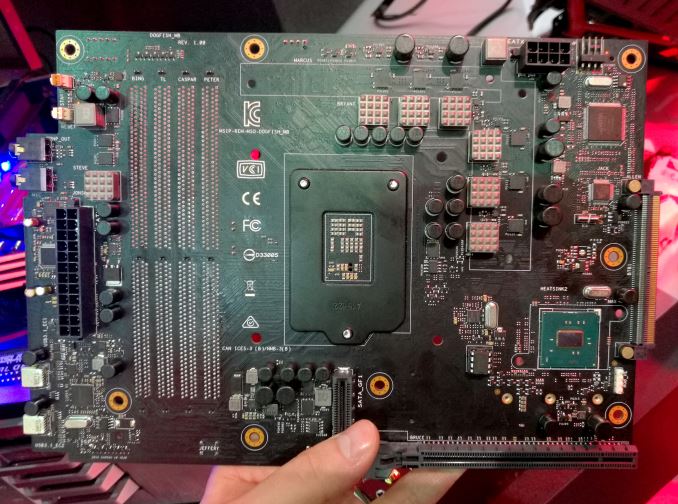
Click the image for the full resolution
Here we see more of what we know – power delivery chokes, a chipset, an 8-pin CPU power connector, a PCIe x16 connector and a 24-pin power connector. There are no SATA ports, and nothing on this system looks normal.
So, to explain: on the bottom near my finger is a custom connector, akin to a 4x PCIe connector, that breaks out into four SATA ports on a daughter board where are hot swappable on the chassis. The connector supplies both data and power. On the far right is a proprietary ASUS header for the rear IO.
At current, ASUS is not finalized on the pin layout and isn’t conforming to any particular standard, but this connector can send chipset PCIe lanes, digital video, and a few other things, over to a daughter board. This means one thing – adjustable rear IO panels!
I love this idea. Here are two examples of what ASUS suggests: the top one is a rear IO for workstation users, featuring dual Intel NIC and inside is a RAID capable M.2 slot running at PCIe 3.0 x4. The rear panel is a Home Theater focused design, using a single NIC and a USB 3.1 controller for 10 Gbps use. ASUS also had a VR edition with the specific ports required for the big VR headsets currently in the market. Because the custom connector carries enough PCIe, this opens it up to other custom designs, such as Thunderbolt, 10 Gbit Ethernet, different Ethernet/WiFi, additional storage, or anything that needs PCIe. Also, on the audio side, because this is a separate board, it could also influence audio capabilities and provide cleaner signals for audio processing. Adjustable rear IO is a topic only just being breached, with plenty of possibility.
Avalon's design is still very much fluid, with one GPU currently being supported:
I won’t go too much into Avalon here, as we were able to get some hands-on time with Jonathan Tseng, the product manager of Avalon, and do a quick teardown video after the show had finished. The audio on the video needs some cleaning up, and we’ll try and post that in due course. In the meantime, here’s a quick teardown video of the motherboard:
The video is silent
At this point the Avalon project is in an early design phase, so ASUS is looking for feedback with what they have so far. I don’t particularly mind if this ends up being an engineering concept design that never goes on sale (I’ve been pushing manufacturers to do more concept designs, similar to vehicle manufacturers at car shows), but the fact that ASUS are prepared to even attempt this is a good thing.


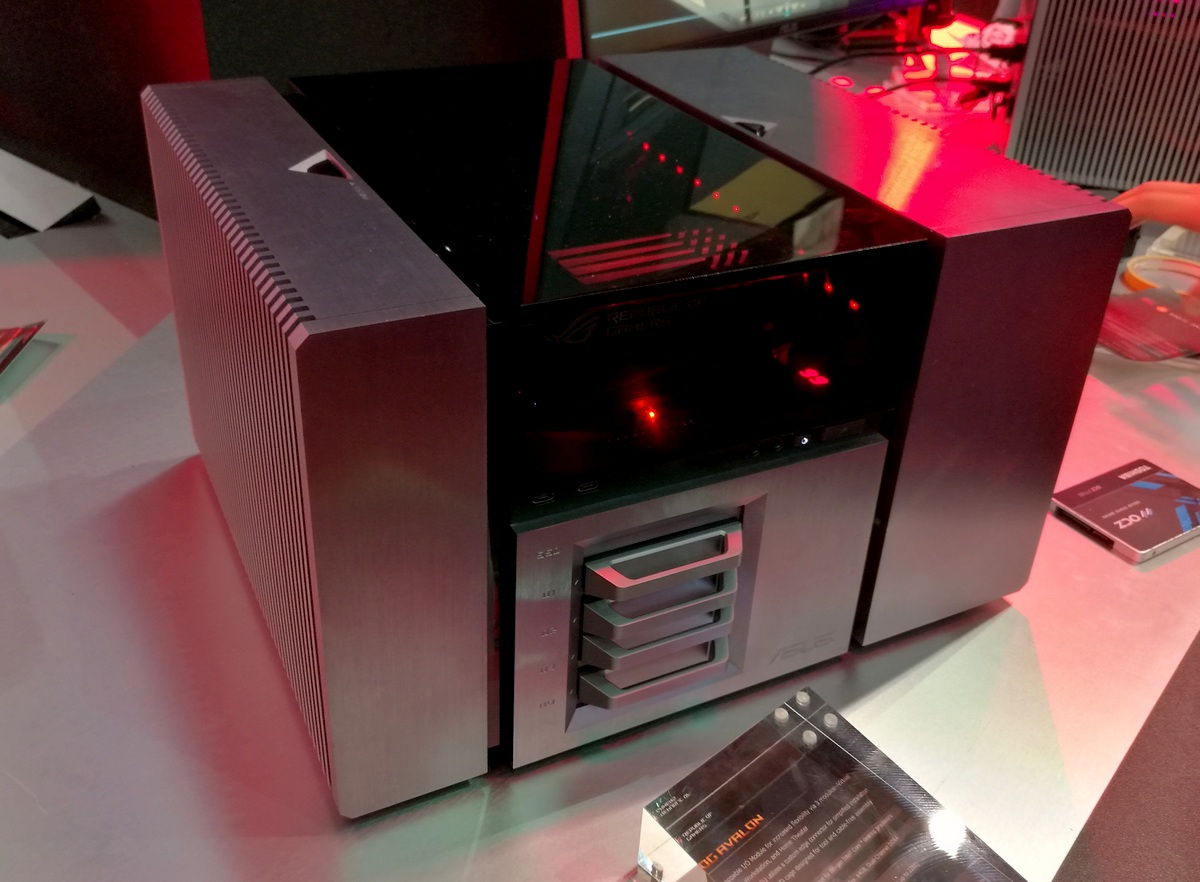
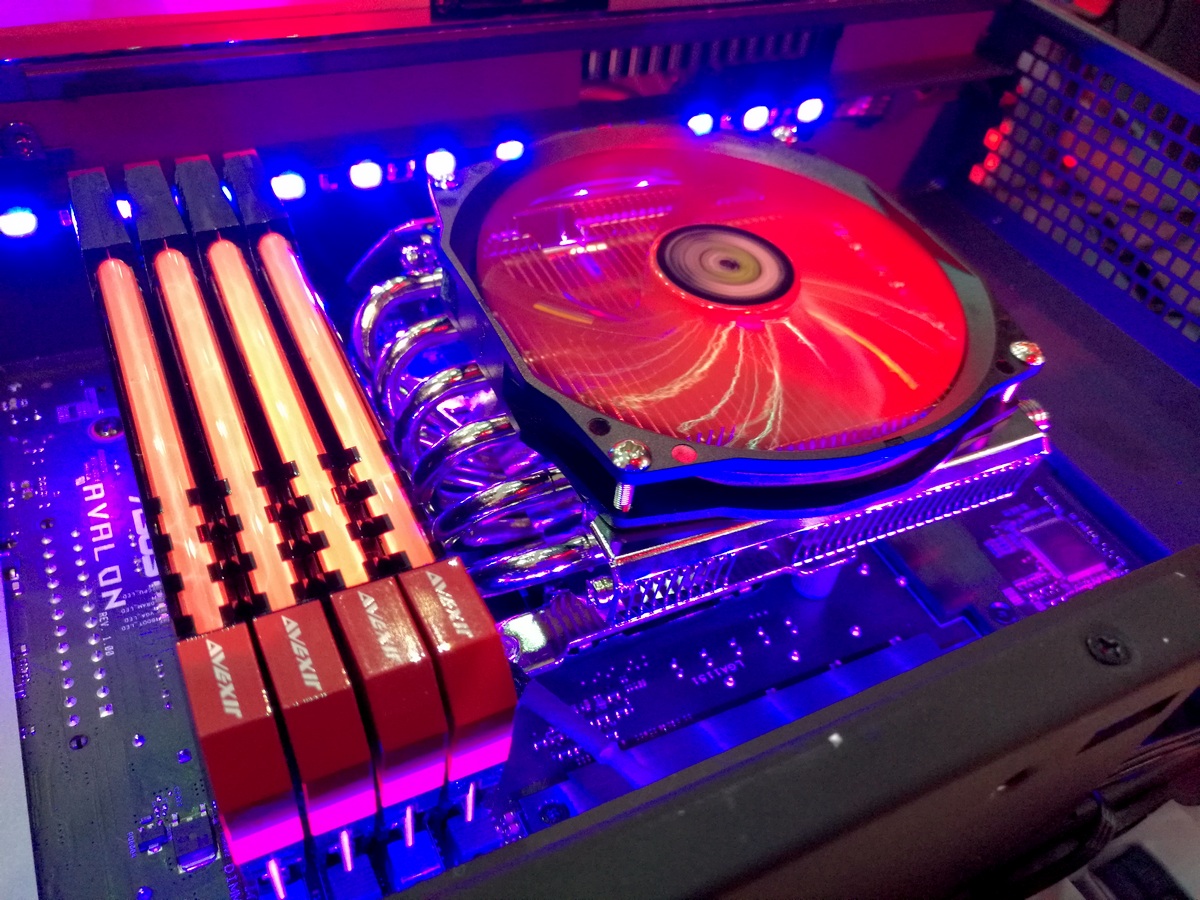
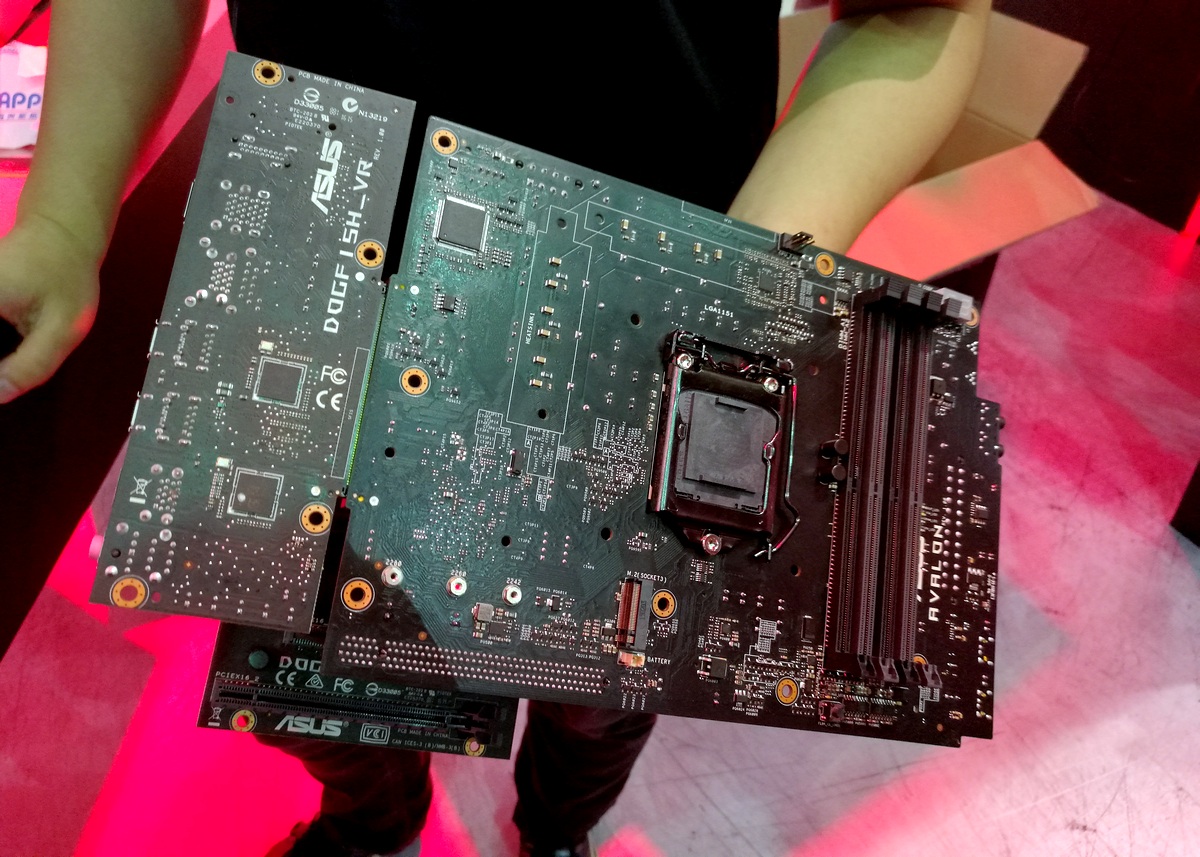

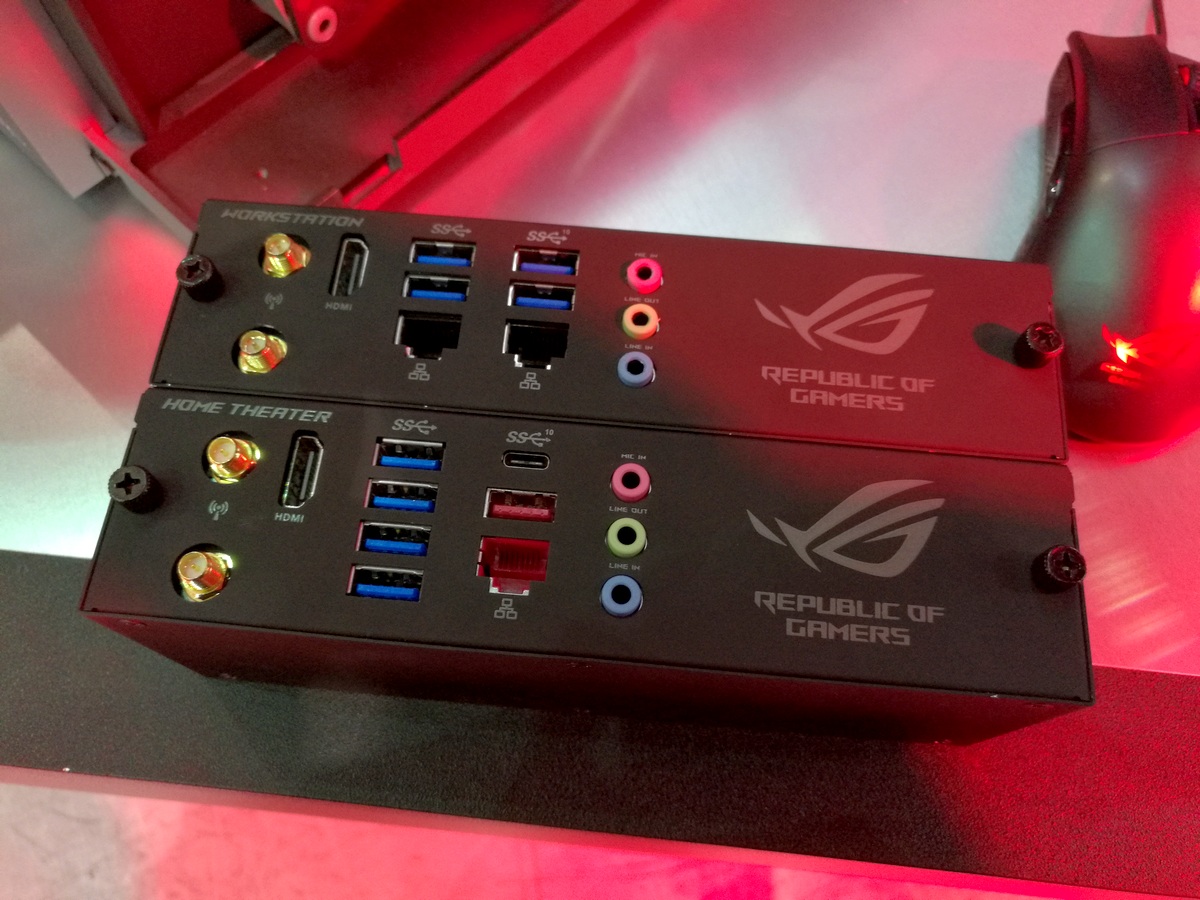
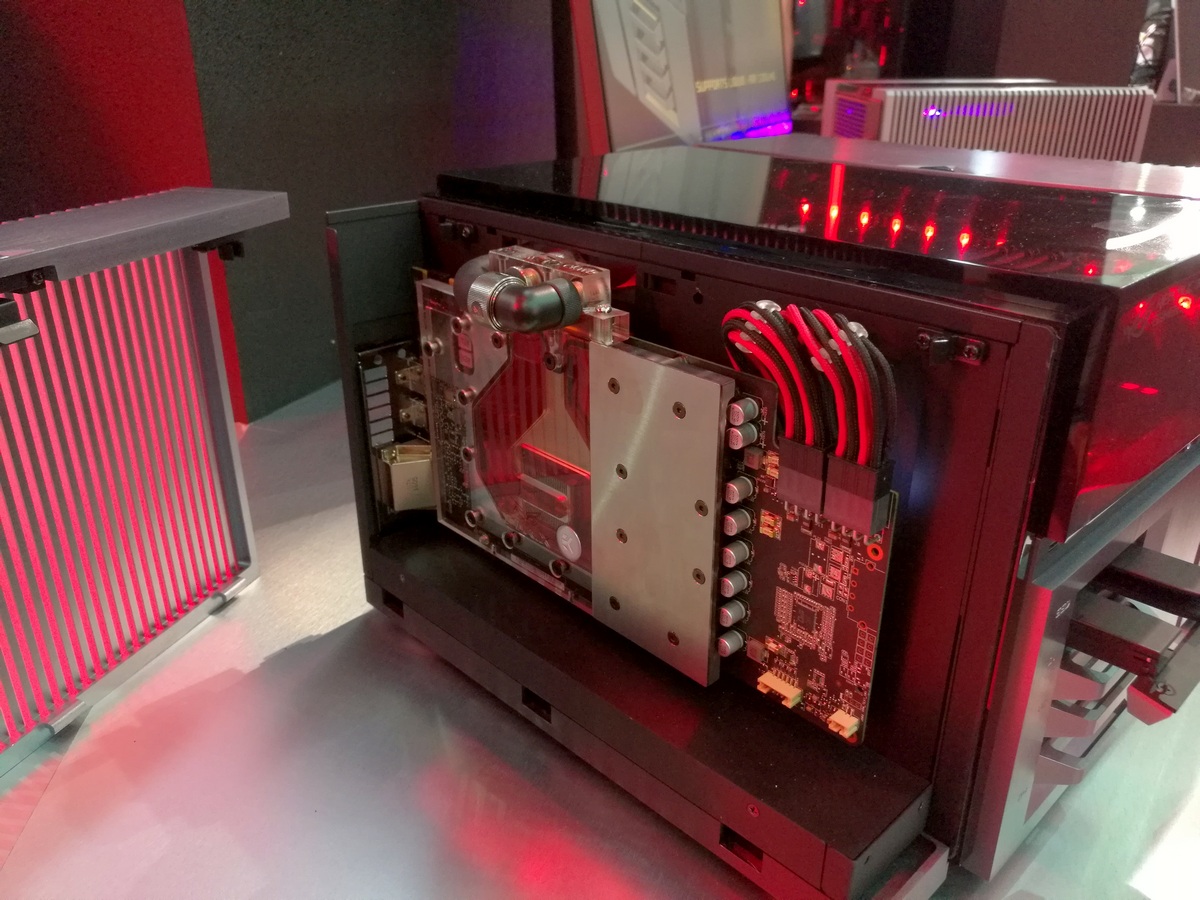








43 Comments
View All Comments
Ian Cutress - Thursday, June 23, 2016 - link
It's an MSword issue when you (sometimes) insert a hyperlink. Should be fixed.Soundgardener - Sunday, June 26, 2016 - link
No; it's a technical publication issue when you forego proof-readers / copyeditors. Other examples:we waited until the following day and was able to browse the ASUS ROG Booth (we WERE not we was)
and they seem willing to be prepared to pay for it (willing / prepared: pick one, delete the other ;)
Other features such as color accuracy are also lauded by the professional community as well. (also / as well: again, only one needed...)
better color reproducibility (better colour reproduction, better colour gamut, or better colour...)
alphasquadron - Wednesday, June 22, 2016 - link
For the 240hz monitor, a good way to tell if the human eye cannot tell a difference is to test it out with professional gamers (preferably fast twitch shooters). They should be able to tell you if there is a difference or do a blind test with them. I won't listen to any more regular idiots who for the previous generation said the eye cannot tell the difference between 60hz and 120hz.Lolimaster - Wednesday, June 22, 2016 - link
The main difference people should be noticing is not about "gaming" but the thing that it reduces further more the innate flaw of the LCD/OLED sample and hold way of delivering frames vs the constantly refresh nature of CRT.OLED should starting to be called true CRT successor when every panel goes at 240Hz.
alphasquadron - Wednesday, June 22, 2016 - link
Thought anything over a 100hz had a better refresh rate than CRTs, but then again not sure.Lolimaster - Wednesday, June 22, 2016 - link
Frame time (sample and hold tech):60hz 16.66ms
120hz 8.33ms
240Hz 4.16ms
Technically you'll need about 960Hz on LCD's to achieve CRT levels of smoothness (lightboost is pretty close).
alphasquadron - Wednesday, June 22, 2016 - link
That sucks because I don't see us reaching hardware to drive 960Hz anytime soon. We just got the hardware to drive 144hz at 1080p smoothly.Gastec - Wednesday, August 31, 2016 - link
Considering that LCD monitors entered "mainstream" in 2003-2004 and that good quality 144Hz+ monitors of all resolutions are still prohibitively expensive for the average Joe, I would make a quick estimate that 960 Hz and it's driving hardware would theoretically reach our mortal realms in about 160 years.Midwayman - Thursday, June 23, 2016 - link
There are studies to say that 240hz should be usable. However there are two things. Imagine persistence is more important and they didn't explicitly state ULMB support or what refresh range it works at. Second is there is really a point of diminishing returns for refresh anyways. With a 144hz monitor the difference between 60hz and 100hz is readily apparent. Going from 100 to 144hz less so. I imagine the jump to 240hz even less important.Bragabondio - Wednesday, June 22, 2016 - link
Can anybody explain me why for God's sake there millions of updated LGA 2011-v3 motherboards but only in ATX size!?! I was patiently waiting to build a new Broadwell E PC with micro ATX or even mini ITX board and there is not a single micro ATX that has all the new features of their big brother (some don't have USB 3.1 other have the M.2 in the older PCI 2 format - not much faster than the SATA 3 etc.) Even going for z170 ( can't believe I will be upgrading to 4 core CPU after 6 years of 4 core CPU - core i7 870!) and there are just a few micro ATX z170 boards with all the new features.I am not going back to gigantic ATX case - thank you very much, so I am left with the choice of either not upgrading (I gave my old PC to my mom so currently I use MS Surface pro with a dock that works well for office work not so much for gaming) , wait for ZEN, buy a laptop that supports external video card dock (laptop + dock would probably take the same space and would have zero upgradability - except for the video card) or cave up and get core i7 6700k.
So I don't understand why manufacturers don't want my money?